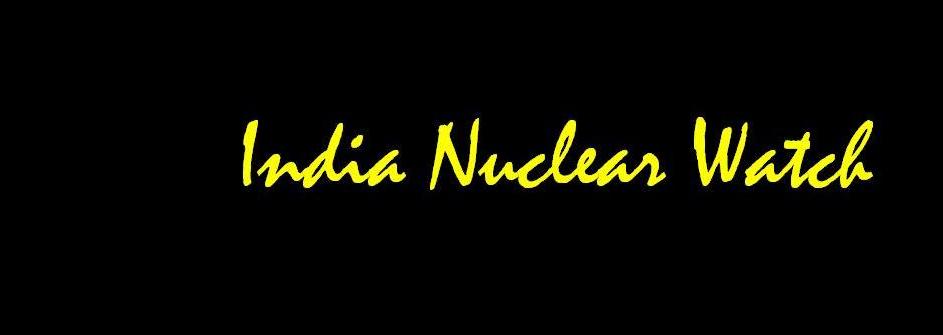|
DEEPAK JAIN, a Delhi scrap dealer, suffered multiple burns and suppressed bone marrow disease after touching what looked like just another piece of metal in April this year. He recovered after two months, but Rajendra Prasad, who worked in close vicinity to Deepak’s shop, died of pneumonia while exhibiting signs of kidney and liver dysfunction. They had been exposed to Cobalt-60, a deadly radioactive isotope that found its way into Mayapuri from the labs of Delhi University (DU). This incident, that left 10 more scrap workers seriously ill, was quoted by Didier Louvat of International Atomic Energy Agency (IAEA) as the most serious global instance of radiation exposure since 2006. Six months on, TEHELKA finds out if the lessons have been learnt.
After the Mayapuri incident, DU’s licence to handle radioactive substance was revoked by the Atomic Energy Regulatory Board (AERB) on 15 September. The University Grants Commission (UGC) set up an expert committee in May as per the order of Human Resource Development ministry. The committee came up with an interim report, damning excerpts of which were quoted in a section of the media on 28 September. One of the several findings is that three universities out of 210 using radiation sources — University of Hyderabad, Osmania University and Pune University — have sidestepped safety procedures. When TEHELKA spoke to committee head Dr GK Rath, Department of Radiation Oncology, AIIMS, he refused to divulge any details.
The report’s highlights include formation of a University Safety Committee (USC), an apex body appointed by the Academic Council to oversee safety in handling of radioactive substances. There are clear guidelines on how liquid soluble waste and solid waste can be disposed of by qualified personnel in the sanitary sewage system and in burial pits located inside varsities respectively.
Key lab-related rules are laid down too which say, “All labs should prominently display the standard operating procedures”, while Radiation Safety Officers (RSO) — a faculty trained to handle radioactive substances and approved by the AERB — should supervise radiation-related research.
THE COMMITTEE is also said to have raised concerns about the existing shortcomings across research facilities. In fact, Delhi University Vice-Chancellor Deepak Pental accepts that in comparison to international facilities, Indian safety standards are below par. “Funding for international facilities is blocked in case of dereliction in following standard operating procedures,” he says.
To decode the process, TEHELKA spoke to professors who deal with radioactive substance in various universities. In terms of procuring radioactive substance, universities buy material from BARC or import it if it is unavailable in India. There are very strict regulations in place for transport of radioactive substances. They are brought in sealed lead containers with clear indicators of radioactive content.
|
According to Sandhya S Vishweshwaraiah, a professor in the Department of Molecular Reproduction and Developing Genetics, Indian Institute of Science (IISc), Bengaluru, the nature of the compound and its usage defines the method of disposal. For instance, letting the radioactivity of a compound decay in a sealed container post its half life (the period after which the radiation levels start decreasing) is one method. If the compound is inside a living organism, incineration is used, followed by disposal as per normal procedures. IISc has a radioactive disposal unit that ensures complete safety in terms of disposal.
“A great degree of caution must be exercised in procuring elements. Larger the scale of usage, higher should be the degree of caution,” Sandhya says. She adds that most universities in India, including IISc, use substances with negligible amount of radioactivity of 1 or 2 curie (a unit for measuring radioactivity).
Prathamesh (name changed), a student of IISc, opines that there should be separate labs to work on radioactive substances instead of having sub-sections in a common lab. “Chance of something happening is always an apprehension,” he adds. Echoing this point is a professor of a well-known university who says, “It is in our work culture to take shortcuts, cut corners, to be negligent and lackadaisical. If at all the regulatory bodies were strict in terms of regular inspection and stronger punishment for defaulters, the Mayapuri incident would have never happened.”
Given the apprehensions that exist even within the academic community, the remedies — albeit mountainous — could begin at the level of communication. A clear-cut understanding at all levels about changes in the ground realities thus becomes an imperative. However, the communication gap is alarming. Take, for instance, the reality that only 21 out of 500 institutions replied to a questionnaire sent by UGC’s expert committee seeking answers on storage and handling of radioactive substance. Mumbaibased AERB, which issues licences for using radioactive substances, is oblivious to the situation. However, in an email response to TEHELKA, AERB Secretary R Bhattacharya expressed concern that such a thing is happening.
|
|
In its effort to avoid Mayapuri-like incidents, the AERB has undertaken several measures. “Bringing unattended radiation sources in the contaminated zone to light is a major challenge,” says Bhattacharya. As far as the standards go, “pertaining to obligations to the international community, the AERB follows standards set by the IAEA on issues of safety, training and security”. The regulatory body has also acknowledged the need for the syllabus to include training in medical management during radiation emergencies.
At the present juncture, the onus is on HRD ministry to bring these issues to the table while it reviews the interim report. The co-ordination between the supplier, the regulatory board and the institutions needs amplification to an extent that translates into transparency.
“Most projects and labs which handle radioactive elements are heavily guarded by layers of secrecy,” says a professor at IIT Powai on conditions of anonymity. “There is opacity in scientific community practices that makes asking questions difficult. Even if that science risks the lives of many others…”
Nikhil Ghanekhar & G. Vishnu
Courtesy: Tehelka October 9, 2010




No comments:
Post a Comment